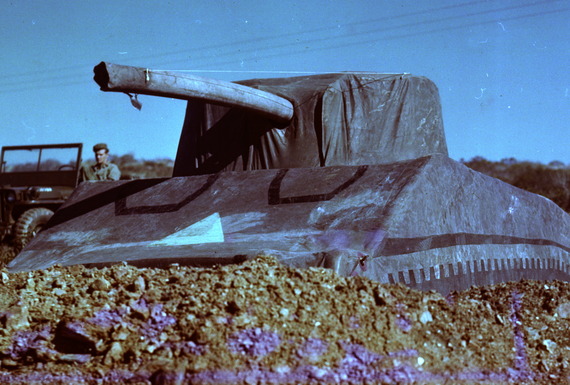James “Stocky” Edwards has never forgotten his 23rd birthday. It was June 5, 1944, and the Saskatchewan native was a Canadian fighter pilot in command of the RAF 274 Squadron, stationed in the United Kingdom. He remembers his commanders calling him in for a secret briefing.

“They all told us: ‘Tomorrow is the day,’” the 97-year-old recalls. “It was a very serious moment. It’s something that we had been waiting for for years and now is our chance.
READ MORE: Find all of our D-Day coverage
“It had to be a success. We had to get onto the continent to end the war.”
WATCH: James ‘Stocky’ Edwards recalls the experience of D-Day

The following day, Edwards and the Allies would change the course of history. Operation Overlord, or D-Day as it’s now better known, was the largest seaborne invasion ever attempted, involving around 50,000 vehicles, 11,000 aircraft, 5,000 ships and 150,000 Allied troops. Of those, 14,000 were Canadian, all of whom had volunteered to fight.
“World War II was really an attack on evil. I mean absolutely, morally, that’s why it was a success,” says Canadian D-Day veteran Hugh Buckley, who served with the Sherbrooke Fusiliers. “People were prepared to make the sacrifice.”
WATCH: D-Day veteran Hugh Buckley’s harrowing tale of advancing deep behind Nazi lines

“I honestly would think twice about joining up if I knew that we were going in that kind of battles,” says Canadian D-Day veteran Alex Polowin, who was just 17 years old when he joined the navy.
LISTEN BELOW: 93-year-old Second World War veteran reflects on D-Day
Despite the D-Day invasion’s unprecedented size and scope, victory was far from certain.
“It was estimated by some planners that they could suffer as high as 75 per cent losses in making their attack,” says Mike Bechthold, military historian and executive director of the Juno Beach Centre. “Could you imagine today if Canadian Army commanders said: ‘We’re going to be doing this mission and we expect to have 75 percent casualties’? It was just a totally different time. It was total war.”
The Allies’ main cause for concern: Hitler’s so-called Atlantic Wall. Built in less than three years, mostly with forced labour, the Atlantic Wall was one of the greatest military fortifications ever constructed. It wasn’t actually a wall per se, but a sprawling network of defensive positions stretching more than 5,000 kilometres along the coastline from France to Norway.
The Atlantic Wall included millions of mines and thousands of artillery batteries and bunkers, which were built using 1.2 million tons of steel and 17 million cubic metres of concrete — enough to build more than 400 CN Towers.
“Everything was connected by trenches. It was all interlinked by barbed wire, protected by minefields. It would have had defences, not just out to sea, but to the rear so that the troops couldn’t work their way around and attack from behind. They were all very formidable positions.”

Get breaking National news
WATCH: Canadian war museum in Normandy fighting to unearth and preserve Hitler’s Atlantic Wall

And perhaps the most formidable of those positions were along the coast of France and, in particular, the French port of Calais — the narrowest part of the English Channel, where just 30 kilometres separated Britain from Nazi-occupied territory. Hitler was certain this was where the Allies would strike.
His misbelief was fuelled, in part, by the Allies’ so-called Ghost Army: an Oscar-worthy collection of fake inflatable tanks and phoney army camps and airfields, combined with bogus radio traffic. The Ghost Army was used to trick the Nazis into believing Calais was indeed the target.

“The phantom army, this spoof was so successful that the Germans kept their entire army in the port of Calais region until late June-early July, because they still expected that the main invasion was going to be there,” Bechthold explains.
In truth, the Allies had other plans. The Canadians, British and Americans (supported by troops from several other Allied countries) would storm the beaches of Normandy along an 80-kilometre stretch of coastline. They used codenames: Omaha and Utah for the Americans, Gold and Sword for the British and Juno for the Canadians.
“In those days, if some people said they’re not afraid, they’re just lying,” says Canadian D-Day veteran George Chow. “You are afraid. You’re more or less living from day to day. You don’t know what’s going to happen.”
WATCH: ‘All my heroes are the guys we left behind’: Army Veteran George Chow remembers Juno Beach

Adding to the uncertainty: The worst weather the region had seen in 20 years, which forced the Allies to delay the attack. “We were all seasick,” recalls Buckley. “It was stormy weather and there was four inches of water on the deck.”
Overnight, before the ships arrived, thousands of paratroopers and glider troops dropped behind enemy lines, including the 1st Canadian Parachute battalion. Then at 6:30 a.m., the warships moved in, bombing the beaches in an effort to rip through the Atlantic Wall.
Polowin served aboard HMCS Huron, charged with patrolling the English Channel and preventing enemy ships from attacking the Allied landing crafts as the troops made their way to the beaches.
“I saw a scene in the English Channel. I saw human bodies, human beings run back and forth on the ship that we had torpedoed. And it’s an ugly, ugly sight,” he recalls. “You cry afterwards. You don’t cheer when you see it. You think, it might have been me.”
WATCH: ‘The beginning of the end’: Navy veteran Alex Polowin remembers D-Day from the sea

After a couple of hours, the firing ended and the landing craft, packed with thousands of soldiers, headed for the beach. They arrived to discover the bombardment had failed to destroy many of the enemy positions. The soldiers came ashore wading through chest-high seas, while dodging bullets.
“It was scary. I was scared shitless,” recalls Canadian veteran Norm Kirby, who served with New Brunswick’s North Shore Regiment and was 19 years old on D-Day. As Kirby’s landing craft approached the beach, they hit a mine that tore through the bottom of the vessel.
WATCH: D-Day invasion leaves lasting impression of compassion, camaraderie for veteran Norm Kirby

“I don’t know how many (soldiers) we lost, but there was quite a few,” Kirby says. “I managed to get ashore. I don’t know how, but I did not have any weapon. I crawled up on the beach. Basically, I landed with a knife, fork and spoon in my pocket. That’s all I had.”
WATCH: Rare film footage shows Canadian soldiers with the North Shore Regiment landing on Juno Beach during the D-Day invasion on June 6, 1944

Jim Parks was also 19 and serving with the Royal Winnipeg Rifles when he landed on Juno Beach. “Your world is about ten yards. That’s your world, that’s all,” he says. “All you see is everybody scrambling for themselves and everything. Everybody’s doing what they’re supposed to, going forward. We’re going forward, scrambling out of the water and going forward.”
As Parks waded through the water, he was sideswiped by another landing craft. “I could see stars because I swallowed a lot of water. You sort of get panicky. I made my way to shore somehow and I got onto the beach and scrambled in. One of the people ahead of me had been shot.”
A shell exploded nearby that knocked him unconscious. “All I remember is a white flash,” he says. “You don’t hear it, you don’t see it. It was just a white flash.” The next thing he remembers is another soldier pulling him up by his helmet. “I was buried,” he says. “He’s digging for a me and he saw my helmet and he pulled my helmet like this. And I had a (chin) strap on and it woke me up.”
WATCH: ‘Your whole world is 10 yards’: Juno Beach veteran Jim Parks on the fog of war

“There was so much firing going on and there were ships to the horizon,” recalls Buckley. “You thought: nothing could stop this.” And he was right.
In a matter of hours, the mighty Atlantic Wall was breached, though the Allies had fallen short of their stated goals. Only one Allied unit reached its objective that day: The Canadian 1st Hussars Regiment from London, Ontario, made it about 15 kilometres from the beach to the Caen-Bayeux Highway intersection.
Within days, the British, French, Americans and Canadians had secured their beachheads, through which more than a million troops would soon pour into France. The Allies were back in Western Europe, but there were still 11 more terrible months left to fight.
“There’s no question that it was a turning point historically,” says Buckley.
“The beginning of the end,” says Polowin.
But that victory came at a great cost. By the time the sun set on D-Day, more than 10,000 Allied troops were killed or injured, including 1,074 Canadians.
“Every single one (of the Canadians) is a volunteer,” says Bechthold. “And every one of them gave their life for something they thought was more important than their single life.”
Chow was part of an artillery group that landed on Juno Beach. But, he says, he doesn’t like being called as hero. “All my heroes are the guys we left behind,” he says.
WATCH: Researchers unravel 75-year-old mystery of Canadian soldier’s identity

Special thanks to the Juno Beach Centre.









Comments